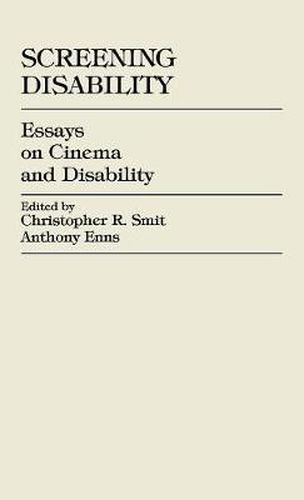Readings Newsletter
Become a Readings Member to make your shopping experience even easier.
Sign in or sign up for free!
You’re not far away from qualifying for FREE standard shipping within Australia
You’ve qualified for FREE standard shipping within Australia
The cart is loading…






Depictions and portrayals of persons who live with disability in motion pictures have changed over time, sometimes reflecting, at other times influencing, societal attitudes and beliefs. Yet disability itself has no easily recognizable form. When isolated from the mainstream of human existence by artistic representations, the disabled individual is effectively transformed into an object of cultural fascination, a fragment of humanity, the Other. The disabled experience, defined only in relation to a perceived lack of human potentiality, becomes significant as a distorted mirror image of what we take to be human and thereby reveals our culture’s preconceived notions of normalcy. Screening Disability was conceived to provide both an overview of the traditional methods of analyzing portrayals of disability in cinema as well as suggesting new directions for cinema and disability scholars to take. This book not only shows where the study of cinema and disability began, but it also marks a potentially new phase in the study of cinema and disability by incorporating elements of Film Studies that emphasize the priority of reception and the complexity of texts.
$9.00 standard shipping within Australia
FREE standard shipping within Australia for orders over $100.00
Express & International shipping calculated at checkout
Depictions and portrayals of persons who live with disability in motion pictures have changed over time, sometimes reflecting, at other times influencing, societal attitudes and beliefs. Yet disability itself has no easily recognizable form. When isolated from the mainstream of human existence by artistic representations, the disabled individual is effectively transformed into an object of cultural fascination, a fragment of humanity, the Other. The disabled experience, defined only in relation to a perceived lack of human potentiality, becomes significant as a distorted mirror image of what we take to be human and thereby reveals our culture’s preconceived notions of normalcy. Screening Disability was conceived to provide both an overview of the traditional methods of analyzing portrayals of disability in cinema as well as suggesting new directions for cinema and disability scholars to take. This book not only shows where the study of cinema and disability began, but it also marks a potentially new phase in the study of cinema and disability by incorporating elements of Film Studies that emphasize the priority of reception and the complexity of texts.